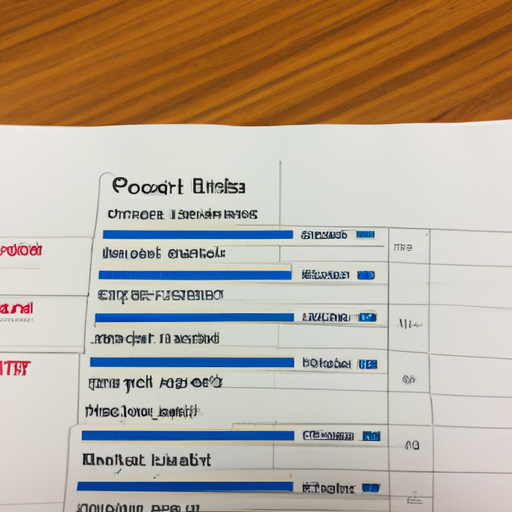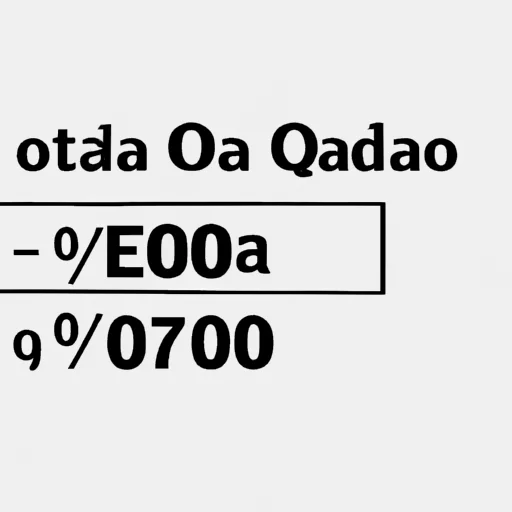 The Slots Pay By Phone Bill & Casino Phone with Mobile Bill Casino, Mobil Casino Bonus pages with CasinoPhoneBill.com
The Slots Pay By Phone Bill & Casino Phone with Mobile Bill Casino, Mobil Casino Bonus pages with CasinoPhoneBill.com
Post Test Odds
-
Casino Mobile Phone Bill Articles
- Introduction
- What Are Post Test Odds and How Can They Help You Make Better Decisions?
- How to Calculate Post Test Odds for Different Types of Tests
- Understanding the Impact of False Positives and False Negatives on Post Test Odds
- Exploring the Benefits of Using Post Test Odds in Clinical Decision Making
- How to Interpret Post Test Odds Results for Different Types of Tests
- The Pros and Cons of Using Post Test Odds in Diagnostic Testing
- What Are the Limitations of Post Test Odds?
- Exploring the Role of Prevalence in Calculating Post Test Odds
- How to Use Post Test Odds to Evaluate Different Treatment Options
- The Role of Bayes' Theorem in Calculating Post Test Odds
- Comparing the Accuracy of Different Tests Using Post Test Odds
- Exploring the Impact of Prior Probabilities on Post Test Odds
- Q&A
- Conclusion
“Post Test Odds: Get the Odds in Your Favor!”
Introduction
Post Test Odds is a statistical measure used to evaluate the probability of an occasion occurring after a check has been performed. It is used to find out the chance of a certain end result based mostly on the outcomes of a check. Post Test Odds are sometimes used in medical analysis, risk evaluation, and determination making. They can help to determine potential dangers and supply steering on the way to greatest handle them. Post Test Odds can even be used to check totally different remedies or interventions and help to tell selections about which one is most probably to be profitable.
What Are Post Test Odds and How Can They Help You Make Higher Choices?
Post check odds are a mathematical calculation used to find out the probability of a certain end result based mostly on the outcomes of a check. They're used to help individuals make higher selections by offering an goal measure of the chance of a certain end result.
Post check odds are calculated by taking the ratio of the chance of a optimistic end result given a optimistic check end result, to the chance of a optimistic end result given a detrimental check end result. This ratio is then multiplied by the prior odds, which is the chance of a optimistic end result earlier than any testing has been carried out. The ensuing number is the put up check odds, which can be used to find out the probability of a certain end result.
For instance, if an individual has a 1 in 10 likelihood of getting a certain illness earlier than any testing is carried out, after which takes a check that has an 80% accuracy rate, the put up check odds can be calculated to find out the probability that they've the illness. On this case, the put up check odds can be 8:1, meaning that there is an 8 times better likelihood that they've the illness than if that they had not taken the check.
Post check odds can be used to help individuals make higher selections by offering an goal measure of the chance of a certain end result. By understanding put up check odds, individuals can make more knowledgeable selections about their well being and other essential issues.
The way to Calculate Post Test Odds for Completely different Forms of Assessments
Post-check odds are a manner of calculating the chance of a certain end result after a check has been taken. They're used to find out the probability of an individual having a certain situation or illness based mostly on the outcomes of the check. Post-check odds are calculated by taking the pre-check odds (the chance of getting the situation earlier than taking the check) and multiplying it by the probability ratio (the ratio of the chance of a optimistic check end result provided that the individual has the situation, to the chance of a optimistic check end result provided that the individual doesn't have the situation).
For instance, if an individual has a pre-check odds of 0.2 (20%) of getting a certain situation, and the probability ratio for a specific check is 5, then their put up-check odds can be 0.2 x 5 = 1 (100%). Which means that after taking the check, there is now a 100% likelihood that the individual has the situation.
The type of check taken will have an effect on the probability ratio used to calculate put up-check odds. For instance, blood assessments usually have greater probability ratios than urine assessments, meaning that they're more correct in figuring out whether or not or not somebody has a certain situation. On the other hand, urine assessments usually have decrease probability ratios, meaning that they're much less correct in figuring out whether or not or not somebody has a certain situation.
It is essential to notice that put up-check odds usually are not absolute and ought to be interpreted in context with other elements comparable to age, gender, and medical historical past. Post-check odds also needs to be interpreted with warning as they can be affected by false positives and false negatives.
Understanding the Affect of False Positives and False Negatives on Post Test Odds
False positives and false negatives are two of a very powerful ideas to grasp on the subject of put up-check odds. A false optimistic happens when a check end result incorrectly signifies that an individual has a certain situation, whereas a false detrimental happens when a check end result incorrectly signifies that an individual doesn't have a certain situation. Each of those situations can have a big affect on put up-check odds.
False positives can result in pointless remedies or interventions, which can be expensive and probably dangerous. For instance, if an individual assessments optimistic for a illness however doesn't even have it, they may be prescribed medicine or endure surgical procedure that they don't want. This can result in pointless bills and potential unwanted effects from the remedy.
False negatives can even have severe penalties. If an individual assessments detrimental for a illness however truly has it, they may not obtain the required remedy in time to stop additional problems. This can result in more severe well being points down the road, in addition to elevated medical prices.
It is essential to grasp the affect of false positives and false negatives on put up-check odds in order to make knowledgeable selections about medical testing and remedy. Realizing the potential dangers related to incorrect check outcomes can help people make knowledgeable selections about their well being care.
Exploring the Advantages of Utilizing Post Test Odds in Scientific Determination Making
Within the medical discipline, medical determination making is a necessary a part of offering high quality care to sufferers. One instrument that can be used to help clinicians make knowledgeable selections is put up check odds. Post check odds are a mathematical calculation that can be used to find out the probability of a affected person having a certain situation based mostly on the outcomes of a diagnostic check.
Post check odds can be used to help clinicians make more knowledgeable selections about analysis and remedy. By making an allowance for the outcomes of a diagnostic check, put up check odds can present a more correct evaluation of a affected person's situation than relying solely on the outcomes of the check. This can help clinicians make higher selections about which remedies are most applicable for his or her sufferers.
Post check odds can even be used to help clinicians determine sufferers who may be at risk for certain circumstances. By making an allowance for the outcomes of a diagnostic check, put up check odds can present a sign of which sufferers may be at greater risk for certain circumstances. This can help clinicians determine these sufferers who may want further testing or monitoring in order to ensure they obtain the absolute best care.
Lastly, put up check odds can even be used to help clinicians decide which remedies are most probably to be efficient for his or her sufferers. By making an allowance for the outcomes of a diagnostic check, put up check odds can present a sign of which remedies are most probably to be profitable in treating a specific situation. This can help clinicians make more knowledgeable selections about which remedies are most applicable for his or her sufferers.
Total, put up check odds can be a precious instrument for clinicians when making selections about analysis and remedy. By making an allowance for the outcomes of a diagnostic check, put up check odds can present a sign of which sufferers may be at greater risk for certain circumstances and which remedies are most probably to be profitable in treating them. This can help clinicians make more knowledgeable selections about which remedies are most applicable for his or her sufferers and ensure they obtain the absolute best care.
The way to Interpret Post Test Odds Outcomes for Completely different Forms of Assessments
Deciphering put up-check odds outcomes for various kinds of assessments can be a posh course of. It is essential to grasp the type of check getting used and the related odds ratios in order to precisely interpret the outcomes.
For instance, a diagnostic check comparable to a blood check or imaging scan may have a optimistic predictive worth (PPV) that signifies the probability that an individual has a certain situation in the event that they check optimistic. The PPV is calculated by dividing the number of true positives by the entire number of positives. A better PPV signifies a more correct check end result.
On the other hand, a screening check comparable to a questionnaire or bodily examination may have an odds ratio (OR) that signifies the probability that an individual has a certain situation in the event that they check optimistic. The OR is calculated by dividing the number of true positives by the number of false positives. A better OR signifies a more correct check end result.
As well as, put up-check odds outcomes can even be interpreted in terms of sensitivity and specificity. Sensitivity measures how effectively a check detects true positives, whereas specificity measures how effectively it detects true negatives. A better sensitivity and specificity point out a more correct check end result.
Lastly, put up-check odds outcomes can even be interpreted in terms of optimistic and detrimental predictive values (PPV and NPV). PPV measures how doubtless it is that an individual has a certain situation in the event that they check optimistic, whereas NPV measures how doubtless it is that an individual doesn't have the situation in the event that they check detrimental. A better PPV and NPV point out a more correct check end result.
By understanding the type of check getting used and the related odds ratios, it is potential to precisely interpret put up-check odds outcomes for various kinds of assessments.
The Execs and Cons of Utilizing Post Test Odds in Diagnostic Testing
Post check odds are a great tool for diagnosing medical circumstances, however additionally they have their drawbacks. Understanding the professionals and cons of utilizing put up check odds in diagnostic testing can help healthcare professionals make knowledgeable selections about the way to greatest use this instrument.
The Execs
Post check odds are a great tool for diagnosing medical circumstances as a result of they supply a more correct evaluation of the probability of a affected person having a certain situation. Post check odds take into consideration each the affected person's signs and the outcomes of any assessments which have been performed. This enables healthcare professionals to make more knowledgeable selections about the way to proceed with remedy.
Post check odds additionally present a more correct evaluation of the risk of false positives or false negatives. This is essential as a result of it helps healthcare professionals avoid pointless remedies or assessments that might be dangerous to the affected person.
The Cons
One of many drawbacks of utilizing put up check odds in diagnostic testing is that it can be tough to interpret the outcomes. Post check odds are calculated utilizing complicated mathematical formulation, which can be tough for healthcare professionals to grasp. Moreover, put up check odds can be affected by elements such because the affected person's age, gender, and medical historical past, which can make it tough to precisely interpret the outcomes.
One other potential disadvantage is that put up check odds may not all the time be correct. This is as a result of they're based mostly on possibilities reasonably than certainties, so there is all the time an opportunity that the outcomes might be improper. Moreover, put up check odds may not all the time take into consideration the entire elements that would have an effect on a affected person's analysis, comparable to environmental elements or way of life selections.
Conclusion
Post check odds are a great tool for diagnosing medical circumstances, however additionally they have their drawbacks. Healthcare professionals ought to rigorously think about the professionals and cons of utilizing put up check odds in diagnostic testing earlier than making any selections about the way to proceed with remedy.
What Are the Limitations of Post Test Odds?
Post check odds are a great tool for assessing the probability of a certain end result, however they've some limitations. First, put up check odds are based mostly on the belief that the check getting used is correct and dependable. If the check is not correct or dependable, then the put up check odds is not going to be an correct reflection of the true probability of a certain end result.
Second, put up check odds are based mostly on the belief that every one other elements affecting the result are equal. If there are other elements at play that would affect the result, then the put up check odds may not be an correct reflection of the true probability of a certain end result.
Lastly, put up check odds don't take into consideration any adjustments in the chance of a certain end result over time. If the chance of a certain end result adjustments over time, then the put up check odds may not be an correct reflection of the true probability of a certain end result.
Exploring the Position of Prevalence in Calculating Post Test Odds
Prevalence is an essential issue to contemplate when calculating put up-check odds. Prevalence is the proportion of a inhabitants that has a certain situation or attribute. It is used to estimate the chance of an individual having a certain situation or attribute, provided that they've examined optimistic for it.
When calculating put up-check odds, prevalence is used to find out the probability that an individual has a certain situation or attribute, provided that they've examined optimistic for it. This is carried out by taking the prevalence of the situation or attribute in the inhabitants and multiplying it by the chance of testing optimistic for it. The end result is the put up-check odds.
For instance, if the prevalence of a certain situation in a inhabitants is 10%, and the chance of testing optimistic for it is 90%, then the put up-check odds can be 9%. Which means that there is a 9% likelihood that an individual who assessments optimistic for this situation truly has it.
Prevalence can even be used to calculate pre-check odds. Pre-check odds are the chance of getting a certain situation or attribute earlier than testing for it. To calculate pre-check odds, you are taking the prevalence of the situation or attribute in the inhabitants and divide it by one minus the prevalence. The end result is the pre-check odds.
For instance, if the prevalence of a certain situation in a inhabitants is 10%, then the pre-check odds can be 11%. Which means that there is an 11% likelihood that an individual has this situation earlier than testing for it.
In conclusion, prevalence performs an essential function in calculating put up-check and pre-check odds. It is used to estimate the chance of getting a certain situation or attribute, provided that they've examined optimistic for it, in addition to earlier than testing for it. Understanding how prevalence impacts put up-check and pre-check odds can help healthcare professionals make more knowledgeable selections about analysis and remedy.
The way to Use Post Test Odds to Consider Completely different Remedy Options
Post-check odds are a great tool for evaluating totally different remedy options. They supply a measure of the probability {that a} affected person could have a certain end result after a specific remedy has been administered. By evaluating the put up-check odds of various remedies, healthcare suppliers can make knowledgeable selections about which remedy is most probably to be profitable.
Post-check odds are calculated by taking the chance of a optimistic end result after remedy and dividing it by the chance of a detrimental end result after remedy. For instance, if the chance of a optimistic end result is 0.8 and the chance of a detrimental end result is 0.2, then the put up-check odds can be 4:1 (0.8/0.2). Which means that there is a 4 times better likelihood of a optimistic end result than a detrimental one.
When evaluating totally different remedies, healthcare suppliers ought to think about each the pre-check odds and the put up-check odds. Pre-check odds are calculated by taking the chance of a optimistic end result earlier than remedy and dividing it by the chance of a detrimental end result earlier than remedy. Evaluating pre-check and put up-check odds can help healthcare suppliers decide how efficient a specific remedy is doubtless to be.
Post-check odds can even be used to check totally different remedies. For instance, if two remedies have related pre-check odds however one has greater put up-check odds, then it is doubtless that the remedy with greater put up-check odds will probably be more profitable. Healthcare suppliers also needs to think about other elements comparable to value, unwanted effects, and affected person preferences when making selections about which remedy to make use of.
Post-check odds are an essential instrument for evaluating totally different remedy options and helping healthcare suppliers make knowledgeable selections about which remedies are most probably to be profitable. By evaluating pre-check and put up-check odds, healthcare suppliers can decide which remedies are most probably to provide optimistic outcomes for his or her sufferers.
The Position of Bayes' Theorem in Calculating Post Test Odds
Bayes' Theorem is a mathematical formula used to calculate the chance of an occasion occurring, given the prior information of associated occasions. It is extensively used in medical testing, the place it can be used to calculate the put up-check odds of a affected person having a certain situation, based mostly on the outcomes of a diagnostic check.
The theory is named after Thomas Bayes, an 18th century English statistician and thinker. It states that the chance of an occasion occurring is equal to the chance of the occasion occurring, given the prior information, multiplied by the chance of the prior information itself.
In medical testing, Bayes' Theorem can be used to calculate the put up-check odds of a affected person having a certain situation, based mostly on the outcomes of a diagnostic check. For instance, if a affected person has examined optimistic for a certain situation, Bayes' Theorem can be used to calculate the probability that they really have the situation, given their prior risk elements. This calculation takes under consideration each the sensitivity and specificity of the check, in addition to any other related information concerning the affected person.
The usage of Bayes' Theorem in medical testing has been discovered to be extremely correct and dependable. It is notably helpful in circumstances the place there is uncertainty concerning the accuracy of a check end result or when there are a number of potential causes for a symptom or situation. By making an allowance for all related information a couple of affected person, Bayes' Theorem can present an correct evaluation of their put up-check odds. This can help medical doctors make more knowledgeable selections about analysis and remedy.
Evaluating the Accuracy of Completely different Assessments Utilizing Post Test Odds
With regards to figuring out the accuracy of various assessments, put up check odds can be a great tool. Post check odds are the chance of a situation being current given a optimistic check end result. This is calculated by dividing the chance of a optimistic check end result given the situation is current by the chance of a optimistic check end result given the situation is not current.
For instance, if a check has a sensitivity of 90% and a specificity of 95%, then the put up check odds are 19. Which means that if the check is optimistic, there is a 19 times better likelihood that the situation is current than if the check was detrimental.
By evaluating the put up check odds of various assessments, it is potential to find out which one is more correct. Typically talking, the upper the put up check odds, the more correct the check. For instance, if one check has put up check odds of 19 and one other has put up check odds of 25, then the second check is more correct.
It is essential to notice that put up check odds are just one issue in figuring out the accuracy of a check. Different elements comparable to value, availability, and ease of use also needs to be considered when making selections about which assessments to make use of.
Exploring the Affect of Prior Chances on Post Test Odds
The affect of prior possibilities on put up-check odds is an essential idea in the sphere of statistics. Prior possibilities are the odds of an occasion occurring earlier than any further information is taken under consideration. Post-check odds are the odds of an occasion occurring after further information has been taken under consideration.
Prior possibilities can be used to calculate put up-check odds in a wide range of ways. For instance, if an individual has a previous chance of 0.5 that an occasion will happen, after which receives further information that will increase the probability of the occasion occurring, the put up-check odds will probably be greater than the prior chance. Conversely, if an individual has a previous chance of 0.5 that an occasion will happen, after which receives further information that decreases the probability of the occasion occurring, the put up-check odds will probably be decrease than the prior chance.
The affect of prior possibilities on put up-check odds can be seen in a wide range of real-world situations. For instance, when a physician orders a diagnostic check for a affected person, they may use prior possibilities to find out the probability that the affected person has a certain situation. If the check outcomes come again optimistic, the physician may use the put up-check odds to find out how doubtless it is that the affected person truly has the situation.
Along with medical situations, prior possibilities and put up-check odds can even be used in authorized contexts. For instance, if a jury is introduced with proof that implies a defendant is responsible, they may use prior possibilities to find out how doubtless it is that the defendant is responsible earlier than contemplating any further proof. After contemplating the entire proof, they may use put up-check odds to find out how doubtless it is that the defendant is responsible.
Total, understanding the affect of prior possibilities on put up-check odds is important for making knowledgeable selections in a wide range of contexts. By making an allowance for each prior possibilities and put up-check odds, people can make more correct selections based mostly on accessible proof.
Q&A
1. What are put up-check odds?
Post-check odds are the chance of an individual having a certain situation or illness after taking a diagnostic check.
2. How are put up-check odds calculated?
Post-check odds are calculated by dividing the chance of a optimistic check end result given the presence of the situation or illness (sensitivity) by the chance of a optimistic check end result given the absence of the situation or illness (specificity).
3. What is the distinction between pre-check and put up-check odds?
Pre-check odds are the chance of an individual having a certain situation or illness earlier than taking a diagnostic check, whereas put up-check odds are the chance of an individual having a certain situation or illness after taking a diagnostic check.
4. What is the formula for calculating put up-check odds?
The formula for calculating put up-check odds is: Post-Test Odds = Pre-Test Odds x Sensitivity / (1 – Specificity + Sensitivity x Pre-Test Odds).
5. What is sensitivity in relation to put up-check odds?
Sensitivity is the chance of a optimistic check end result given the presence of the situation or illness. It is used in calculating put up-check odds.
6. What is specificity in relation to put up-check odds?
Specificity is the chance of a detrimental check end result given the absence of the situation or illness. It is used in calculating put up-check odds.
7. How do pre-check and put up-check odds help in making selections about analysis and remedy?
Pre-check and put up-check odds help to tell selections about analysis and remedy by offering an estimate of how doubtless it is that an individual has a certain situation or illness earlier than and after taking a diagnostic check. This information can be used to find out whether or not additional testing or remedy is vital.
8. What are false positives and false negatives in relation to put up-check odds?
False positives are when a diagnostic check incorrectly signifies that an individual has a certain situation or illness when they don't, whereas false negatives are when a diagnostic check incorrectly signifies that an individual doesn't have a certain situation or illness once they do. These can have an effect on the accuracy of put up-check odds calculations.
9. How can false positives and false negatives be minimized?
False positives and false negatives can be minimized by utilizing assessments with high sensitivity and specificity, in addition to by utilizing a number of assessments to substantiate outcomes.
10. What other elements can have an effect on put up-check odds calculations?
Different elements that can have an effect on put up-check odds calculations include inhabitants prevalence, prior possibilities, and Bayes' theorem.
11. How can put up-check odds be used in medical observe?
Post-check odds can be used in medical observe to tell selections about analysis and remedy, in addition to to evaluate the accuracy of diagnostic assessments and decide whether or not additional testing or remedy is vital.
12. Are there any limitations to utilizing put up-check odds?
Sure, there are some limitations to utilizing put up-check odds, comparable to false positives and false negatives, inhabitants prevalence, prior possibilities, and Bayes' theorem, which can all have an effect on the accuracy of calculations. Moreover, put up-check odds can't be used to foretell a person's risk for growing a certain situation or illness in the long run.
Conclusion
Post Test Odds are a great tool for figuring out the probability of a certain end result based mostly on the outcomes of a check. They can be used to help make selections about remedies, analysis, and prognosis. Post Test Odds can even be used to check totally different assessments and coverings to find out which is most probably to provide the specified end result. Post Test Odds are an essential a part of proof-based mostly medication and ought to be used in conjunction with other types of proof to make knowledgeable selections.


























